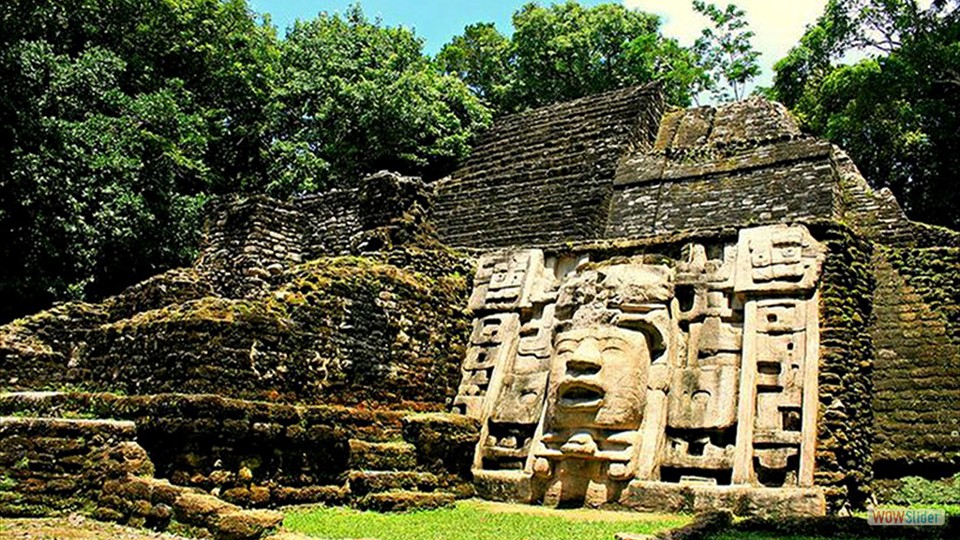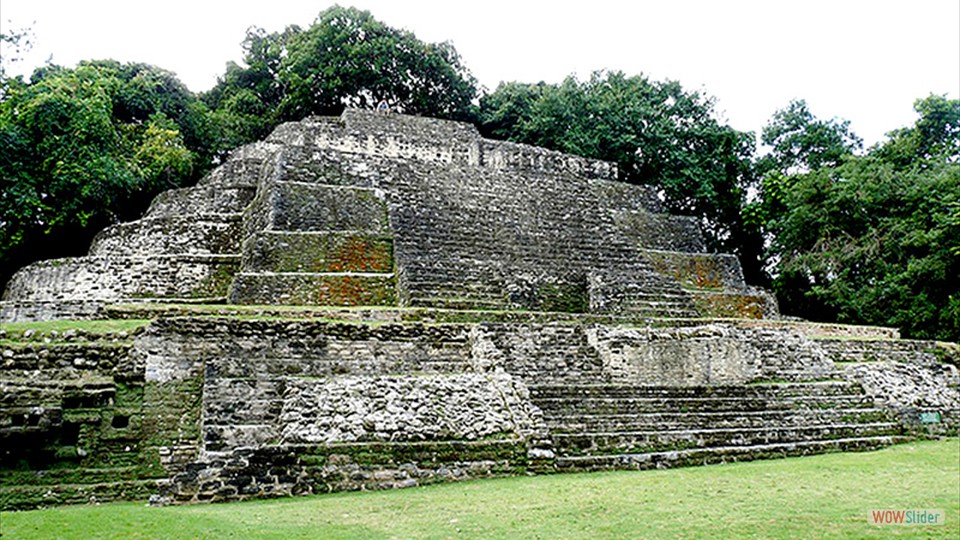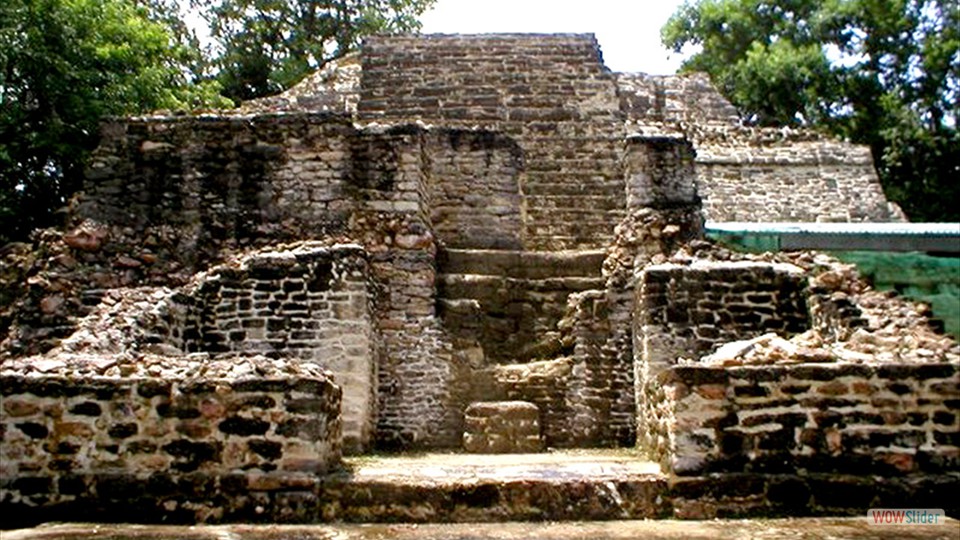Lamanai is one of Belize's largest ceremonial centers. It is also one of the most important. The name "lamanai" comes from the word "submerged crocodile" in the Mayan language. Many representations of the crocodile can be found throughout this site.
This site, situated along the New River Lagoon, features monumental architecture of temples and palaces dating from the Classic and PreClassic Periods. Postclassic artifacts are primarily of a residential nature, not immediately evident to the visiting tourist. A little further south are two Spanish churches. British colonial logging operations shipped logwood and mahogany out of the New River. Finally, even today the site is occupied by a modern village of Salvadoranian refugees. Lamanai then, encompasses all of Belize's major phases of occupation from the Mayan Civilization to the present.
The central area of the site covers approximately half a square mile. The central area plus the residential and other minor structures are spread over 950 acres, which is the present size of the official archaeological reserve.
Pollen evidence dates the earliest occupation at the site to be about 1500 B.C.E.. The earliest pottery has been dated to about 500 B.C.E.. Archaeologists have dug through layer after layer of occupation dating from 500 B.C.E. onward. For example, buried deep inside a 6th century masked temple lies a well preserved Late Preclassic temple dating back to 100 B.C.E. with elements similar to those found at the northern site of Cerros.
The massive main temple called "N10-43" is the largest Preclassic structure known in all of the Mayan world. It too had been heavily modified several times. The last modification has been dated to the Late Classic Period of around 600 C.E.. Only a single dated stela has been recovered from Lamanai. This stela bears a date and the Mayan name of the stela meaning "tree of stone".
During the Late Classic Period, the northern section of the site, previously used as a sacred ceremonial ground, was transformed into residential use. Meanwhile, the ceremonial activities were shifted to the south. New Postclassic structures arose, less spectacular in nature. Archaeologists feel this is evidence that there was a decrease in the availability of laborers and a breakdown of the highly structured hierarchical society of the past.
In addition to the many Mayan structures in the park, Lamanai is also known for the remains of two 16th century Christian churches and a 19th century sugar mill including a huge flywheel and boiler. Due to the long occupation of the site by varied peoples, the artifacts of Lamanai include those of stone, clay, wood, bone, shell, jade, gold, copper, glass, iron and even liquid mercury.
Lamanai was first visited by archaeologists in 1917, but serious excavation and preservation did not occur until the Royal Ontario Museum began a long term project in 1974. Lamanai, like so many other Mayan sites in Belize, experienced heavy looting between 1920 and the early 1970's.
Lamanai lies along the shores of the beautiful New River Lagoon. The waters are perfect for swimming and water sports. Unfortunately, because of heavy agricultural use, the jungle within the archaeological park is the only jungle in the area. The lands outside of the park are a patchwork of sugar cane fields. As a result of this forest fragmentation outside the park, there is an abundance of wildlife in the park. There are at least four families of howler monkeys living there and the marsh lands around the lagoon support many species of water birds.





 1
1 2
2 3
3 4
4